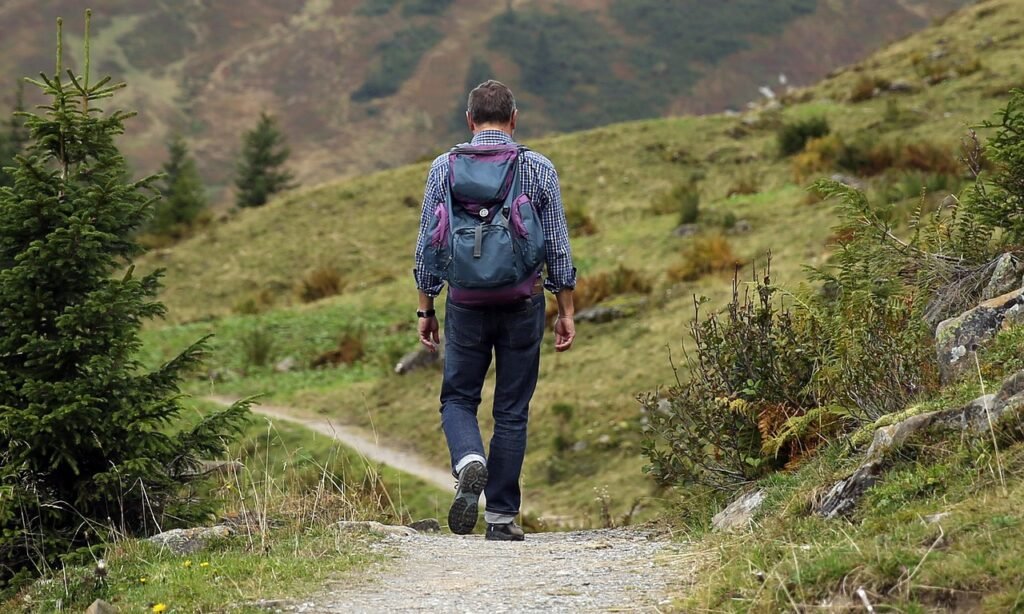How to Choose the Right Hiking Boots for Your Terrain
Not all hiking boots are built the same—and picking the wrong type for your trail can wreck your hike. Whether you’re trekking across rocky ridgelines or strolling through muddy lowlands, your footwear should match your terrain. In this guide, we’ll break down how to choose the right hiking boots for your terrain, including tips for fit, material, and design based on trail type.

Why Terrain Matters When Choosing Hiking Boots
Your boots are your most important hiking gear. The terrain you hike on determines how much ankle support, traction, durability, and water resistance you’ll need. Lightweight trail runners might work for well-maintained dirt paths, but they won’t protect you on alpine scree or deep mud.
Types of Terrain and the Best Boots for Each
1. Flat or Well-Maintained Trails
For gentle trails like forest loops or national park paths, opt for low-cut hiking shoes or trail runners. They’re lightweight, breathable, and comfortable for fast-moving day hikes.
- Best for: Dry, packed dirt or gravel
- Key Features: Lightweight, breathable mesh, flexible soles
- Tip: Look for EVA midsoles for added cushioning
2. Rocky and Mountain Terrain
Uneven, rocky trails call for mid to high-cut boots with reinforced soles and strong ankle support. These boots protect your feet from sharp rocks and reduce the chance of rolling an ankle on unstable surfaces.
- Best for: Steep ascents, alpine trails, rocky switchbacks
- Key Features: Vibram soles, durable leather or nylon uppers, ankle collar support
- Tip: Break them in gradually before long hikes
3. Muddy or Wet Trails
If you’re trekking through boggy paths, wet meadows, or rainy climates, you’ll need waterproof hiking boots with aggressive tread. Gore-Tex or eVent linings help keep feet dry without overheating.
- Best for: Swampy trails, rain-soaked areas, shallow stream crossings
- Key Features: Waterproof membrane, gusseted tongue, deep-lug outsoles
- Tip: Waterproof boots need time to dry—rotate pairs on multi-day treks
4. Snowy or Icy Conditions
Winter hikes and snowy alpine trails require insulated, waterproof boots with stiff soles and microspike compatibility. Traction is critical here, especially on icy inclines.
- Best for: Winter backpacking, glacier travel, snowshoeing
- Key Features: Thermal insulation, waterproof barrier, crampon-ready soles
- Tip: Size up slightly for thicker winter socks
Fit and Comfort: What to Look For
Even the best hiking boots won’t perform well if they don’t fit right. Here’s what to look for:
- Toe room: Your toes shouldn’t touch the front on descents
- Snug heel: Prevents heel lift and blisters
- Midfoot support: No excessive side-to-side movement
- Break-in period: Don’t hit the trail with brand-new boots
Try boots on in the afternoon when feet are slightly swollen—closer to trail conditions.
Materials Matter: Leather vs Synthetic
Full-Grain Leather
Highly durable, water-resistant, and best for rugged conditions. Takes longer to break in but lasts years.
Synthetic Uppers
Made from nylon, polyester, or mesh. Lightweight and quick-drying, but may wear faster than leather.
Split-Grain Leather
Combines leather with synthetic materials. Affordable and breathable but less durable than full-grain.
When to Choose Hiking Shoes or Trail Runners Instead
If you’re day hiking on dry, well-kept trails or fastpacking with minimal gear, hiking shoes or trail runners are worth considering. They offer less support than boots but weigh less and allow for faster movement. However, for technical or multi-day hikes, full boots offer more protection and comfort over time.
Bonus Tip: Match Your Socks to Your Boots
Always wear hiking-specific socks made from merino wool or synthetics. Avoid cotton—it traps moisture and causes blisters. Sock thickness should match the boot’s fit. Thin socks for tight boots, thick socks for roomy boots.
Final Thoughts
Learning how to choose the right hiking boots for your terrain makes a huge difference in performance and comfort. There’s no one-size-fits-all option, so consider your trail, climate, and pack weight before deciding. Your feet will thank you.
For a deeper dive into hiking boot types and fitting tips, check out this expert guide from REI’s boot fitting resource.
What are the different types of hiking boots?
Hiking boots come in several types including light hiking shoes, midweight hiking boots, and heavy-duty mountaineering boots. Each is designed for specific terrain—from well-maintained trails to rocky, steep backcountry.
How do I choose the best hiking boots for rocky terrain?
For rocky or uneven terrain, choose boots with stiff midsoles, deep lugs, and ankle support. Look for vibram soles and full-grain leather or synthetic uppers for durability and protection.
Do I need waterproof hiking boots?
It depends on your hiking conditions. Waterproof hiking boots are ideal for wet, muddy, or rainy environments. However, in dry climates, breathable boots without waterproof membranes may be more comfortable and help prevent blisters.
Should hiking boots be tight or loose?
Hiking boots should fit snugly around the heel and midfoot but allow room to wiggle your toes. Make sure there’s about a thumb’s width of space at the toe box to accommodate swelling on long hikes.
How do I break in new hiking boots?
Start by wearing them on short walks or day hikes, gradually increasing the distance. Use the same socks you’ll wear on the trail and make sure your laces are properly adjusted to prevent hot spots.
Are trail runners better than hiking boots?
Trail runners are lighter and more breathable, making them great for fast-paced hiking on well-maintained trails. However, hiking boots provide more support and protection on rough, uneven, or steep terrain.
What’s the best sole for hiking boots?
Look for soles made from Vibram or similar rubber compounds, with aggressive tread patterns for grip. Deeper lugs improve traction on slippery or loose surfaces.
How long do hiking boots typically last?
With regular use, good hiking boots can last 500–1,000 miles depending on the materials and terrain. Proper cleaning, drying, and storage can extend their life.
